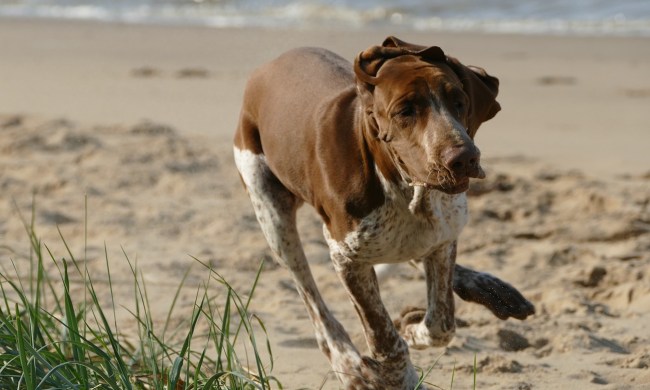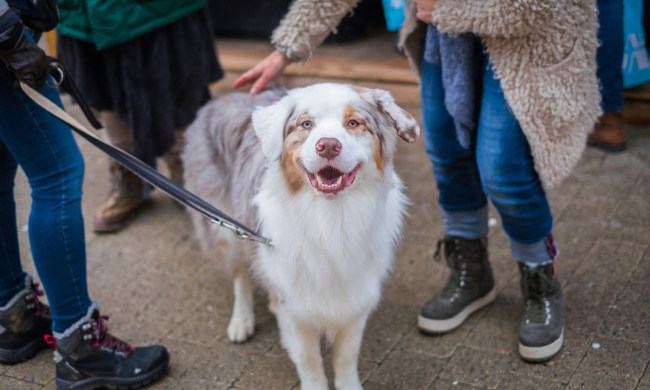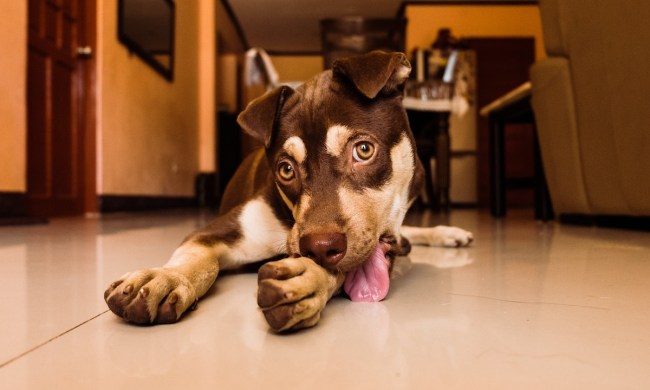Noticing when a dog enters heat can be rather easy: Even just a spot of bloody discharge will tell you what you need to know. Of course, it can help to know when your dog is estimated to reach puberty, too!
Still, many dog owners find themselves asking, "How long does a dog stay in heat?" Learning to spot these subtle signs isn’t as obvious as other changes — like the transition from puppyhood to adulthood, for example — but we’re here to show you what to look for.
We’ll address questions such as:
- When do female dogs begin their first heat cycle?
- How long does a dog stay in heat?
- How can I tell when my dog is no longer in heat?
- What does each phase of the cycle look like?
- Do dogs go through menopause?
So, read on to learn everything you need to know to keep you and your pup as relaxed as possible during her heat cycle. With just a little TLC, and maybe an extra homemade treat or two, it’ll be a piece of cake!
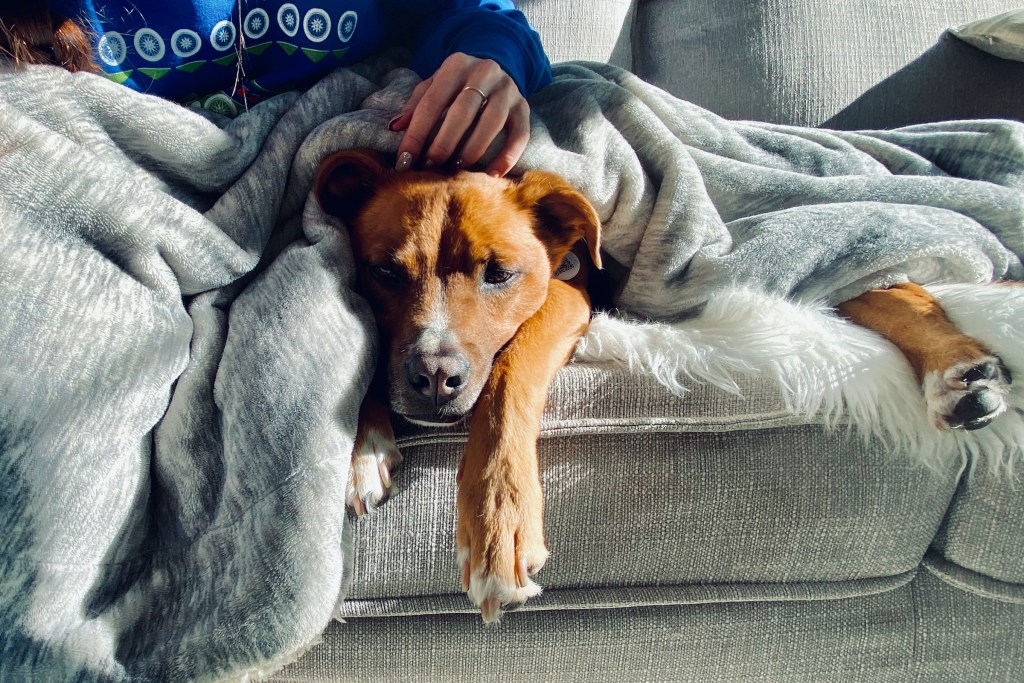
What happens when a dog is in heat? Here's a phase-by-phase breakdown
At around 9 months of age, a female dog will experience her first heat cycle. The exact age this begins may vary based on your dog's breed and size.
Step 1: It begins with the proestrus phase, when you may notice visible changes like a swollen vulva and bloody discharge. East Central Veterinary Hospital (ECVV) explains that this is when the female will become attractive to males, but she will not be receptive to mating. In fact, she may be rather against it! This stage lasts an average of 9 days, though it can extend up to 27 days or even be skipped entirely.
Step 2: During estrus, the next phase, the female is releasing pheromones and is ready to mate. The American Kennel Club notes that she may even approach males and initiate contact by offering her behind to be mounted. Her vulva will remain swollen but soften slightly, while her discharge will contain less blood. It can be more of a watery, tan, or salmon-colored liquid at this stage in the cycle.
This phase also lasts for an average of 9 days, with a much wider range of possible durations (4 to 24 days, according to ECVV). Remember, what’s normal for one dog may be totally different from the healthy cycle of another. If you're ever worried, you can always consult your vet!

How long does a dog stay in heat after her bleeding stops?
By the time she reaches diestrus, your dog will stop bleeding. This is the final active phase of the heat cycle, but it marks the end of the female’s willingness to mate. She will not be receptive to males during this time, though many hormonal and physical changes are still happening in her body. ECVV states that this stage lasts around two months and is a time when the body prepares itself to either carry a fertilized egg or get ready for the next cycle.
Here’s the catch: Although a female dog may still be experiencing symptoms of being in heat, her only fertile period is during the estrus phase. These nine days (on average) will be when she wants to mate as well. So, while your dog may not be fertile when bleeding begins, she will no longer be able to conceive by the time the discharge ends.

How do you know when dog heat is over?
The very same changes that mark the beginning of canine heat are also signs of the end of the cycle. You will know your dog is no longer in heat when her vulva returns to its normal size and there is no more blood-tinged discharge.
In total, a dog will be in heat for two to three weeks per cycle. The length between cycles depends on her breed, size, and age, though on average a pooch will go through two cycles per calendar year. Some larger breeds, especially Northern breed dogs like huskies and malamutes, tend to go into heat once a year, while the smaller breeds can experience as many as four cycles a year.
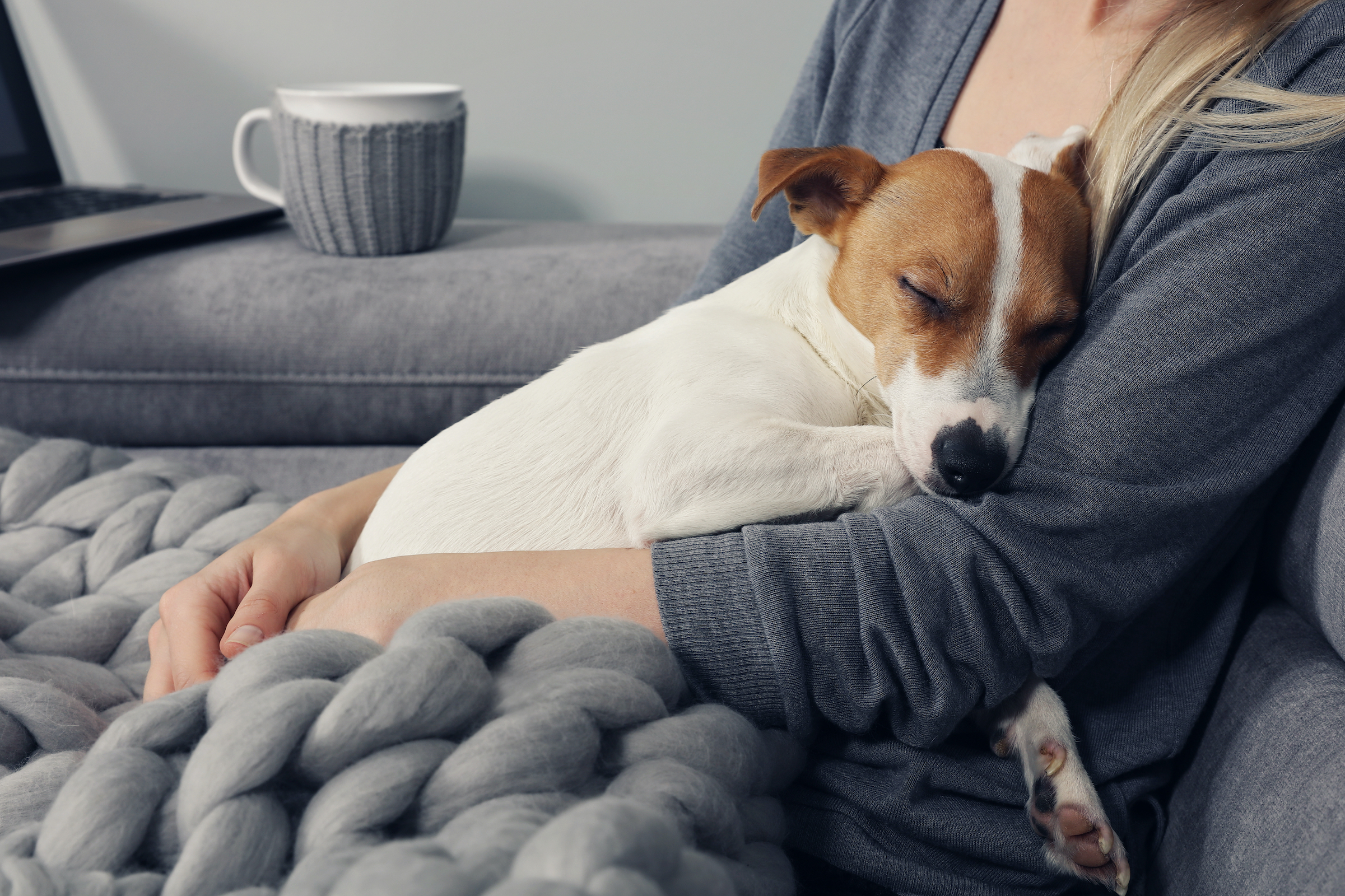
How do you care for a dog in heat? Our best tips to keep her comfortable
Step 1: Don’t spend too much time outdoors.
The comfort and safety of your dog should always come first, so be sure to keep an eye on her at all times while she’s socializing with other dogs. In fact, many canine health pros recommend not leaving your pup outside while she’s in heat, as she can attract some unwanted attention. It's best to skip the dog park this time around!
Step 2: Increase bathroom trips.
Your dog may need to urinate more often, so she will thank you for adding an extra bathroom trip to your daily routine. This is when doggie diapers can come in handy while you're indoors, too.
Step 3: Spend time with your dog.
You may also want to schedule some additional snuggle time, as pups can be extra affectionate and clingy while in heat. Moodiness happens whether you want it to or not — human women totally understand!
Step 4: Be smart about cleaning.
If you invest in doggie diapers for your pet’s estrus cycle, you may not need to worry about cleaning. Whatever you choose to do, though, be sure not to punish your dog for any bloody stains — she can’t help it. It may help to use a dog or baby gate to confine her to an easy-to-clean portion of the house if she doesn’t like diapers. When in doubt, potty pads are a great investment!
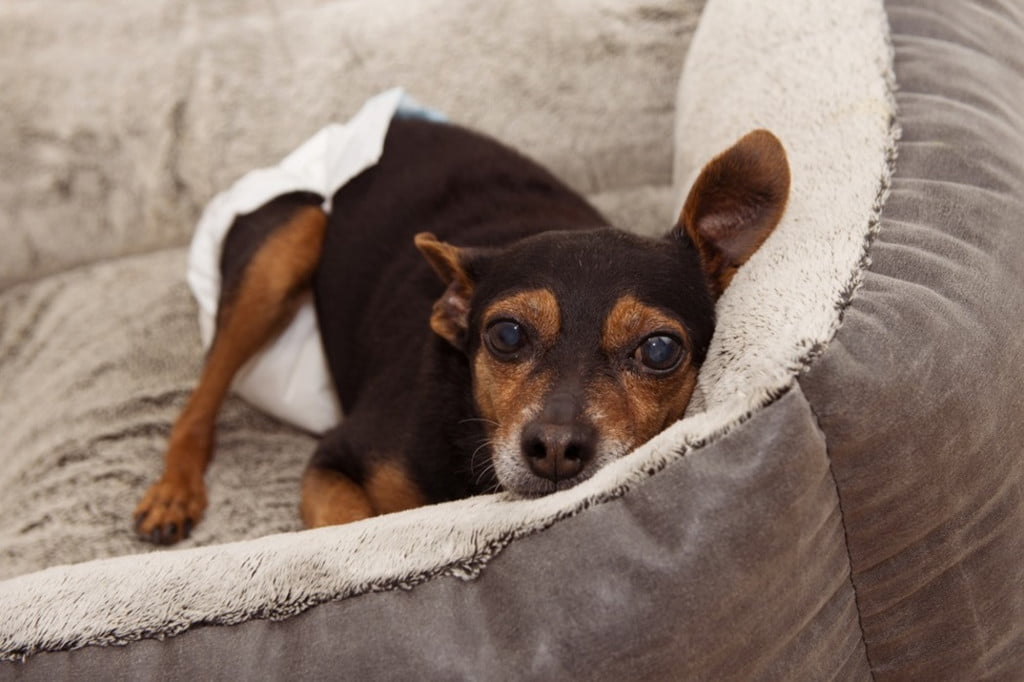
At what age do dogs' heat cycles begin?
On average, you can expect a young female dog's first heat cycle to begin around 9 months of age. Of course, every dog is going to be slightly different, so there's no need to panic if your 12-month-old hasn't had her first cycle yet. Many factors play a role in your pup's estrus cycles, but remember — a veterinarian visit is always the best way to ensure your dog's health is as it should be.
VCA Hospitals explains that small dog breeds, like Chihuahuas and dachshunds, can reach puberty and start their first heat cycle as soon as 4 to 6 months of age. Larger dogs, on the other hand, may not be fully mature until 18 to 24 months. That's a big difference! Knowing what to expect can help ease your mind, but keeping up with your puppy's vet visits is vital to her health and your peace of mind.

Do dogs have menopause? Will a dog's cycles stop after a certain age?
Because the canine menstrual cycle is different than humans', terms like "menopause" don't really apply. PetMD's Michael Kearley, DVM, explains that while an older dog's cycle may not cease altogether (in fact, you should take your dog to the vet if she's stopped having heat cycles completely without being spayed), they will become more and more infrequent as she ages.
Dr. Kearley also cautions against pregnancy in senior dogs. Many risks, such as puppy death or labor complications, can occur when a mother is older. It's not worth the risk to her or her pups!

What if a dog attracts mates during her cycle?
As careful as pet parents can be, accidents and extra attention can still occur. The pheromones your dog releases during the estrus cycle can attract males near and far, but your dog might not mind at all. In fact, she may be just as excited about it! However, accidents can lead to unexpected pregnancies and a delay in spaying your dog, so please be extra careful unless you are planning to let your dog breed.
Step 1: Ask questions about your dog's mate.
Although intact male dogs will almost always respond to a female in heat, even males who have been neutered may react to female pheromones. If your dog's mate is neutered, you won't have to worry about the possibility of pregnancy! However, this isn't always easy to tell, which is why it's important to ask the other dog's owner a few questions, if applicable.
Step 2: Separate mounting dogs if able and desired.
If you catch the dogs in the act when it's undesired, discourage the mounting behavior by separating them as soon as possible. However, if the dogs have already become 'tied' together during copulation, do not attempt to separate them. During intercourse, the male's penis expands inside the females vagina, and manually separating them can cause injury to both dogs.
If you are planning to mate your dog, you will likely not need to intervene during this process. Let the dogs initiate and separate by themselves.
Step 3: Plan for pregnancy or visit the veterinarian.
If you don't want your dog to become pregnant, you should visit the veterinarian to discuss your options. Females can be spayed following intercourse, which will stop any potential pregnancies. There are also medications to end pregnancies that your vet can prescribe, though the reabsorption/abortion process can take several days.
For planned pregnancies, female dogs should rest far away from any other male dogs following intercourse. Because estrus lasts for several days, it is possible for a pregnancy to occur with multiple fathers!
All in all, the heat cycle can be a stressful time for a pup (uterus owners unite!), so a little love from her favorite person can go a long way. Whether she’s feeling grumpy, frisky, or lazy, it’s all just part of the process. Don’t worry! A few weeks from now, everything will be back to normal.


